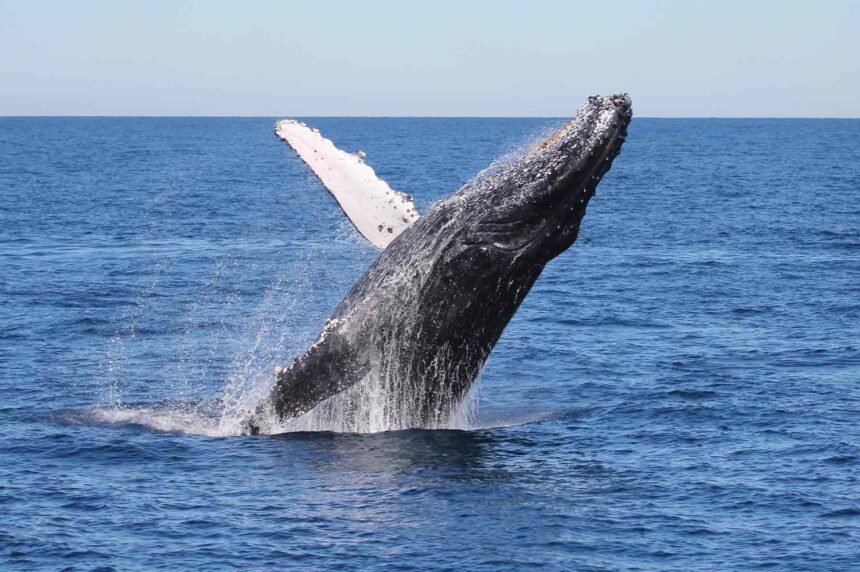Each year, as temperatures drop in Antarctica, a great migration begins. Tens of thousands of humpback whales—more than 45,000 by some estimates—set off on an epic 6,200-mile journey north that runs along Australia’s east coast. They are bound for warm tropical waters where they breed and calve before taking the same route back to the Southern Ocean. Locals call it the Humpback Highway, and from June through November, it offers one of the world’s most reliable and awe-inspiring whale-watching experiences.
At the heart of the spectacle is Moreton Bay, a protected stretch of water just offshore Brisbane that the whales pass through. The migration reaches its peak in August, when larger pods appear and there is a surge in social behavior: tail slapping, pectoral waving, and the unmistakable breach.
This year, the outlook is especially promising. Sightings are already up, and with the humpback whale population increasing, some skippers are predicting it could be the most active season yet. For travelers, access couldn’t be easier. Brisbane is one of the only major cities in the world where you can leave your hotel after breakfast and be scanning the ocean for whales by midmorning—no long drives or complicated transfers required.
Tour companies like Brisbane Whale Watching pick up guests 40 minutes north of the city and boast a whale-sighting guarantee. For larger groups, or a small, VIP experience, Sovereign Lady Charters has a 74-foot private-use yacht that fits up to 35 guests and departs 30 minutes east of downtown Brisbane.
You might also be able to glimpse the massive migration by taking a ferry to North Stradbroke Island in Moreton Bay and watching from. Cape Moreton on Moreton Island is another land-based viewing point. To reach the cape, take a ferry to Moreton Island and walk the Cape Moreton track to the Cape Moreton Lighthouse, Queensland’s only stone lighthouse. It is a great place to catch the Humpback Highway as it passes by the shores of the island.
Not all whale watching requires a boat. North Stradbroke Island (known to locals as “Straddie”) is reachable by ferry and offers commanding views from Point Lookout, a clifftop path where whales can often be seen breaching just offshore. For something even wilder, head to Moreton Island, a national park of towering sand dunes and quiet beaches. From the ferry landing, hike the Cape Moreton Track to the historic Cape Moreton Lighthouse (the only stone lighthouse in Queensland) and take in sweeping views of the Pacific.
Whale season off the coast of Brisbane runs from June to November and peaks in August. According to new research from Griffith University, Moreton Bay is becoming more than just a migratory corridor—it’s now a key resting and nursing zone for mother whales and their calves on their return journey south.







